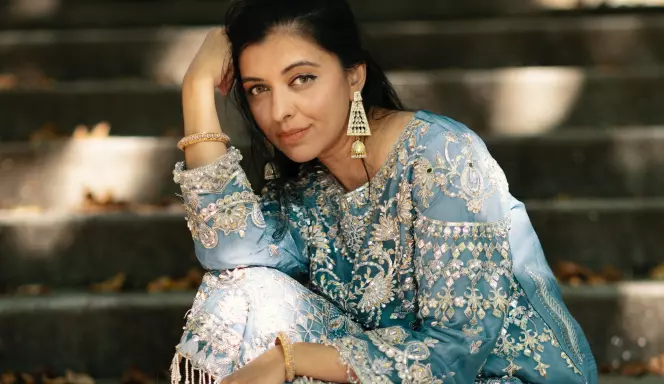This month, we are coming together to overview the importance of what people wear and how we dress. People first wore clothing to survive and inhabit extreme climates, but this functionality evolved overtime into what we unconsciously consume as trends.
Halloween brings up a larger discussion of what it means to dress up. We are gathering to investigate the difference between costume and sacred garments. The decisions we make when putting clothes on our bodies says a lot about our relationship with and understanding of the world, our own identities, and cultures. There is a lot of meaning in what we wear, especially when it comes to ritual, community and communication amongst groups of people
This meetup will deepen our knowledge about how to respect what is sacred.

October’s Meetup celebrated Halloween early as we discussed Halloween costumes and how they have been shaped over time, especially by the LGBTQIA+ community. As fun as Halloween is to many, it’s not fun when your culture is mocked and degraded by someone who has no context…

Carla Marie Munoz is a Tribal Councilwoman of the Costanoan Rumsen Carmel Tribe. Serving as a tribal liaison for her people for the past nine years. Creating relationships between state parks, government agencies, and other tribal communities. She is focused on creating space for ceremonies, land restorations, as well as tribal recognition. Dedicated to working with tribal youth to restore traditional knowledge and bring tangible culture. Singing alongside her grandfather Chief Tony Cerda for the past 23 years, as well as partnering with her Ohlone Sister to share their cultural heritage. Now working as an artist using shells to make contemporary jewelry and oil paintings.

Indigenous activist and model Darvette Lefthand is a member of the Stoney Nakoda Sioux Nation and comes from Morley, a First Nations settlement, in Alberta, Canada. Living on the reservation had its share of struggles and hardships, but Darvette found her place among family and community members where she learned traditional knowledge, medicines, teachings, and cultural survival. She continues to learn more about traditional knowledge as well as to relearn the Stoney Nakoda language. With her colleagues, Darvette is a part of a grassroots movement dedicated to stopping drug dealers from selling hard drugs in the Stoney Nakoda Reserve. Above all, Darvette campaigns for Indigenous and human rights.
Did you know?
Adults dressing up for Halloween was made popular in the 1970s by the San Francisco
gay community, enlivening Halloween as a holiday of self-expression and liberation.
The different colours, embroidery patterns, length of sleeves, thicknesses of the obi, and
amount of layers of a kimono reflect seniority, marriage status, season, and
occasion of who is wearing it, as well as the history of Japan.
In some Indigenous tribes the use of eagle feathers was restricted as they were
only to be worn by warriors and leaders. Other tribe members would not wear
eagle feathers in their headbands.

Discussing various examples of cultural clothing
around the world and its meaning in ritual
How are traditions in clothing appropriated in
today's culture style wise?
Holding space for the vision of free dressing
to express our intersectional identities.